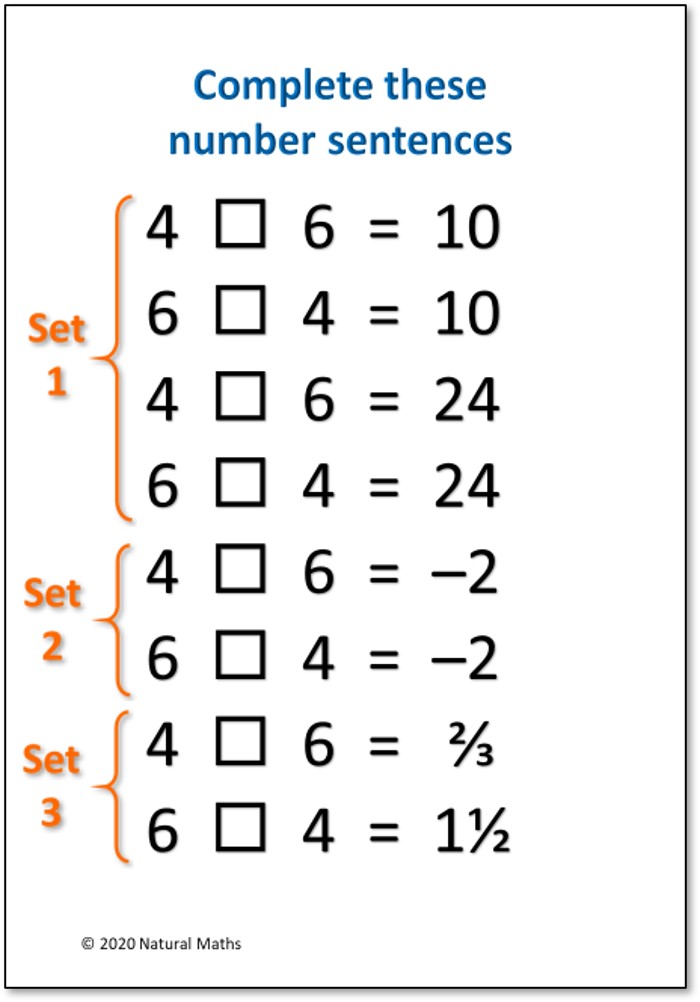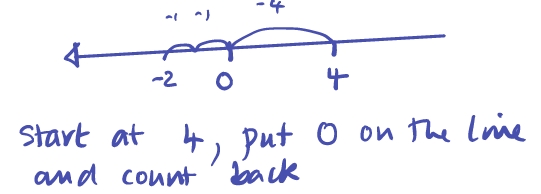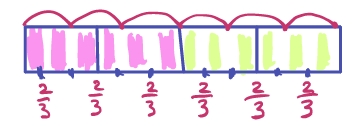Complete these Number Sentences
With the best will and planning, there will still be some odd minutes during the day that could have been better utilized. Careful choice of short burst tasks and challenges can engage students and provide windows into mathematical thinking and understanding. A short burst task is a task that can be:
- given to students on arrival to class while usual morning routines are carried out,
- used during transitions,
- given to students to responsibly work on and think about in odd moments throughout the day,
- quickly debriefed or followed up with short whole-class or small-group focused learning episodes,
- a quick formative assessment task or exit pass.
Here is an example that you can download by clicking on the picture below.

Formative Assessment Opportunities
This is what we saw and heard when we took this short burst challenge into a year 6-7 classroom recently.
Set 1
All students worked out each answer (a few using fingers) but only a few noticed that the commutative property (4 + 6 and 6 + 4, 4 × 6 and 6 × 4) could have been used, meaning that there were actually only 2 discrete sums to do. In fact a pair of students did notice and were heard to say “6 × 4 is 24 and 4 × 6 is 24 so these are the same” with surprise in their voices as if this was a revelation to them.
Set 2
Clearly an understanding of integers is needed for these questions but as well as revealing understanding about integers they also revealed that some students had been over taught rules for subtraction using the traditional method of subtraction.

For this number sentence, some students actually said “6 from 4 you can’t and so its 6 – 4 equals 2 not minus 2.” For some students though this was not such a problem because they used empty number line thinking and one partnership modelled the following:

This was all it took to prompt others to use an empty number line to show how to work out – 6 + 4 = –2. It was interesting to see how powerful empty number line thinking was for most students.
Set 3
The last two questions were meant to be challenging and we actually suggested that students try drawing or diagramming! We also suggested that one question might be easier than the other question. For some students, this hint fell on deaf ears and they struggled with the first question whereas students who did the second question first were more successful. Pizzas were the main device used, with students sharing the first 4 pizzas, one each, and then cutting the remaining two in half, which meant that each person got 1½ pizzas.

For 4 6 = ⅔ there was a struggle for many students until an unexpected student excitedly called out “Cut them in thirds!”. Some students had difficulty drawing thirds initially and one group drew this diagram:

Actually, we have reproduced it in colour not their lead pencil version, which was harder to follow. So, question? Why do we make kids do maths in grey and black and white? Bring on the gel pens and highlighters.
Have a safe weekend! Best wishes from Johnny and I.

